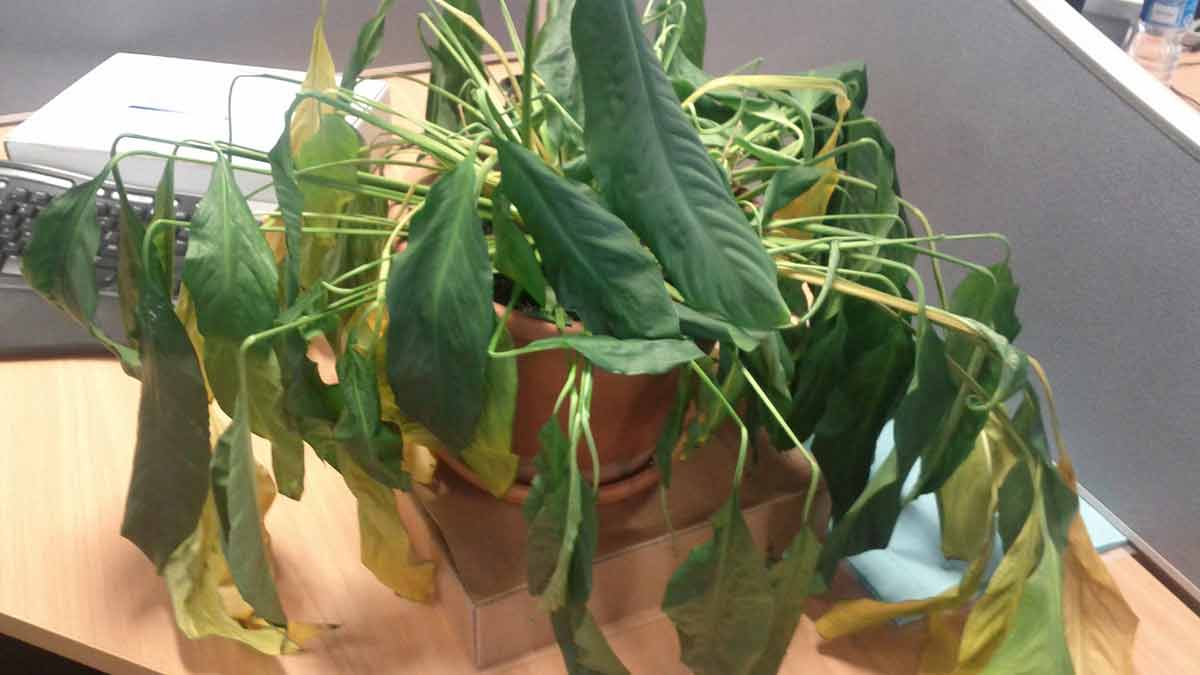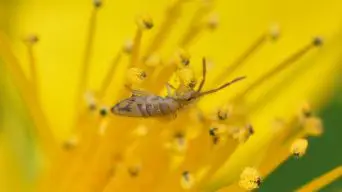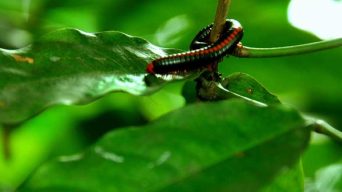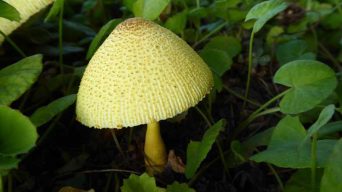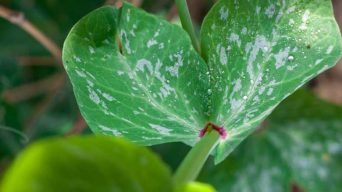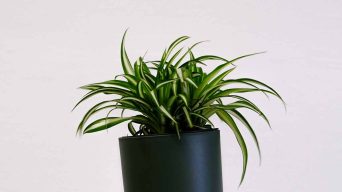Drooping leaves in houseplants can result from underwatering, overwatering, low humidity, insufficient light, temperature stress, pest infestation, or transplant shock. Solutions include adjusting watering, improving humidity, ensuring adequate light, managing temperature, addressing pests, and allowing time for adjustment after transplanting.
Houseplants offer a wonderful opportunity to introduce a touch of nature into your home.
They have the potential to enhance indoor air quality, elevate your mood, and contribute to improved focus and productivity.
However, it’s not uncommon for houseplants to encounter issues.
One of the common problems that may arise is the presence of drooping leaves.
Fortunately, these problems can be resolved with the right care and attention, allowing your plants to regain their health and vitality.
Understanding and Fixing Drooping Leaves in Houseplants
Encountering drooping leaves on your houseplants can be frustrating, especially when you diligently care for them.
You provide your plants with optimal care, so why are their leaves still drooping?
Fortunately, there are specific solutions for the various reasons behind your houseplant leaves drooping.
1. Underwatering
One of the most common causes of droopy houseplants is underwatering.
This issue is prevalent among indoor plants, and when the soil becomes excessively dry, it can lead to several visible symptoms, including drooping leaves and wilting.
These signs often indicate that a plant is not receiving adequate water.
Furthermore, underwatering can result in weakened stems, causing them to become slender, and it can also cause the flowers to lose their vibrancy.
When a plant lacks sufficient water, it lacks essential nutrients, which manifests as weak and slender stems, wilting leaves, and faded flowers.
If the water shortage persists, the plant may eventually cease to grow altogether.
Identifying and Addressing Underwatering
To determine if your houseplant is underwatered, watch for the following seven signs:
- Wilting or drooping leaves.
- Slower growth than usual.
- Yellowing or browning of the leaves.
- Dry or crispy leaves.
- Dry soil.
- Wilting even after watering.
- Hard and compacted soil.
If you observe any of these signs, it is likely that your plant is not receiving enough water.
If you suspect underwatering, take the following steps to help your plant recover:
- First, thoroughly water the plant, ensuring the soil becomes moist and allowing excess water to drain from the pot’s drainage holes.
- You may need to increase the frequency of watering until the plant recovers.
- To revive wilted leaves, consider misting them with water.
- Generally, indoor plants require watering approximately once a week.
- Always check the soil’s dryness before watering to avoid overwatering, which can also harm plants.
2. Overwatering
While underwatering is a common problem, overwatering can also pose issues.
It’s crucial to strike a balance when providing water to your plants to avoid drowning them.
Overwatering can deprive plant roots of the oxygen they need, leading to rot.
Additionally, excessive water can cause plant leaves to droop as they attempt to absorb surplus moisture.
This problem is often observed in potted plants lacking drainage holes, where the soil remains consistently wet, promoting root rot.
Recognizing and Correcting Overwatering
Several telltale signs indicate that your indoor plant may be suffering from overwatering:
- Wilting or drooping leaves, even when the soil is dry.
- Yellowing or browning of leaves.
- Leaves falling off prematurely.
- Soft or mushy stems.
- Presence of mold on the soil or the plant.
- Black or brown roots.
- Soggy or wet soil.
If you observe any of these signs, your plant is likely overwatered.
To remedy the situation, follow these steps:
- Cease watering the plant and allow the soil to dry out thoroughly.
- Reduce the frequency of watering to aid in the plant’s recovery.
- Consider repotting the plant in a container with drainage holes to facilitate excess water drainage.
- Trim any rotted roots back to healthy tissue if root damage is evident.
Once your plant has recuperated, adopt a watering regimen based on soil dryness to prevent future overwatering issues.
3. Low Humidity
Low humidity is a frequent cause of indoor plants’ drooping leaves.
Many houseplants originate from tropical climates where the air is consistently humid.
When these plants are cultivated in dry environments, their leaves may begin to droop as they attempt to retain moisture.
Unfortunately, most homes have low humidity levels, which can pose challenges for many plant species.
Detecting Low Humidity and Increasing Moisture Levels
There are clear indicators that your indoor plant is suffering from inadequate humidity.
The leaves may lose their vibrant green hue and develop brown, brittle edges, particularly at the tips.
Additionally, brown spots on the leaves can result from dehydration.
Another telltale sign is wilting leaves, which signifies a lack of sufficient humidity.
Several methods can be employed to increase the humidity around your houseplants:
- Mist the leaves with water multiple times daily to elevate the surrounding humidity.
- Utilize a pebble tray containing water and pebbles – to elevate the plant above the water. As the water evaporates, it will enhance the humidity around the plant.
- Employ a humidifier to augment room humidity, especially if several plants require increased moisture.
However, monitoring the humidity level to prevent it from becoming excessively high is essential, as this can also harm your plants.
4. Not Enough Sunlight
Inadequate sunlight is a common cause of indoor plant leaf drooping because plants rely on sunlight for photosynthesis and nourishment.
Without sufficient sunlight, plants can starve, leading to drooping leaves.
Identifying Lack of Sunlight and Enhancing Light Exposure
There are clear indicators that your plant isn’t getting enough sunlight. Watch out for these signs:
- Yellowing or paling of leaves.
- Excessive stretching of the plant as it reaches for sunlight.
- Leaf loss.
If you observe any of these signs, it’s time to consider relocating your plant to a sunnier spot. Here’s what you can do to provide more light:
- Relocate the plant to a west- or south-facing window, which typically offers the ideal amount of sunlight without overexposing the plant.
- If moving the plant isn’t feasible, you can also explore using grow lights. These artificial lights mimic natural sunlight and effectively support your plant’s growth.
5. Temperature Stress
Temperature stress is another common reason for a droopy houseplant.
Plants are susceptible to changes in temperature and can be harmed by cold and hot weather.
If the temperature is too cold, the plant may be shocked, and the leaves will droop.
When exposed to excessive heat, the plant’s leaves will wilt and droop, indicating that the temperature is too high.
Houseplants need to be kept in an environment between 60 and 80 degrees Fahrenheit.
A stable temperature is also important.
Sudden temperature changes can harm plants and may cause the leaves to droop.
Spotting and Mitigating Temperature Stress
Signs of temperature stress in indoor plants include:
- Yellow or brown leaves
- Leaf loss
- Curling of leaves
- Wilting
- Slower growth
- Stunted growth
Additionally, cold-damaged plants exhibit stiff and brittle leaves, while excessively hot conditions lead to limp and wilted leaves.
While many indoor plants tolerate a range of temperatures, some have specific preferences.
If your plant displays signs of stress like wilting or slow growth, temperature stress could be the cause.
To remedy this:
- Relocate your plant to an area within its preferred temperature range, which may involve adjusting its proximity to windows.
- Ensure proper ventilation in your plant’s room to prevent temperature extremes.
- If your home’s temperature is consistently too hot or cold for your plant, consider using a humidifier or dehumidifier to stabilize the environment.
- Avoid sudden temperature shifts, like placing your plant near drafts or exposing it to cold air when opening doors.
Following these tips can effectively address temperature stress in your houseplants.
6. Pest Infestation
Indoor plants can often suffer from pest infestations, leading to drooping foliage.
Various pests, such as aphids, spider mites, and mealybugs, can invade houseplants, sapping them of vital nutrients and causing leaves to wilt.
Additionally, these pests can transmit diseases that further harm the plants.
Identifying and Eliminating Pests
Recognizing signs of pest infestations is crucial for prompt action:
- Sticky leaves: Certain pests, like aphids and mealybugs, excrete honeydew, a sticky substance that can attract more pests and promote mold growth on the plant.
- Leaf damage: Pests like caterpillars, mites, and beetles may create holes in the plant’s leaves.
- Discolored leaves: Many pests can cause leaves to turn yellow or brown.
If you observe any of these indicators, your plant likely has a pest problem. Here’s what you can do to address it:
- Isolate the affected plant: To prevent the pests from spreading to other plants, isolate the infested one.
- Manual removal: If you can spot the pests on your plant, gently remove them by hand using a cotton swab or soft brush.
- Neem oil: Neem oil is a natural and safe pesticide that eliminates most common houseplant pests, posing no harm to humans or animals.
- Insecticidal soap: Create your insecticidal soap by mixing 1 cup of water with 1 teaspoon of dish soap. This solution is a safe and effective means of combating various pests.
By taking these steps, you can effectively address pest infestations and help your indoor plants thrive.
7. Transplant Shock
Transplant shock is a common issue that can lead to the wilting of indoor plant foliage.
It occurs when a plant is relocated from outdoors to indoors or within your garden.
When a plant is transplanted, its roots are disturbed, causing stress to the plant, often resulting in drooping leaves.
Recognizing and Assisting Recovery from Transplant Shock
Several signs can help you identify if your plant is experiencing transplant shock:
- Wilting Leaves: One of the most prevalent indications of transplant shock is the wilting of leaves. The roots struggle to absorb enough water to hydrate the plant.
- Yellow or Brown Leaves: Another common sign of transplant shock is leaves turning yellow or brown. This occurs when the roots are damaged and can’t absorb nutrients from the soil.
- Stunted Growth: If your plant isn’t growing as rapidly as expected, it may be going through transplant shock.
If you observe any of these signs, your plant might be experiencing transplant shock.
There are steps you can take to aid your plant in recovering from this condition:
- Allow Adjustment Time: It takes time for a plant to adapt to a new environment. Give your plant a week to acclimate to its new location before making any changes.
- Regular Watering: Consistent watering is essential to reduce the stress caused by transplant shock. Ensure deep watering to reach the roots adequately.
- Pruning: Pruning your plant can help it channel its energy into new growth. Remove any dead or dying leaves, stems, or branches.
Your plant will overcome transplant shock and thrive in its new home with patience and proper care.
Preventing Droopy Leaves in Indoor Plants
To keep your houseplants healthy and prevent leaves from drooping, there are a few things you can do:
1. Check the Soil
First and foremost, check the soil your indoor plant is growing in. Is it too wet or too dry?
If the soil is too wet, your plant’s roots are probably suffocating, which will cause the leaves to droop.
On the other hand, if the potting mix is too dry, the plant isn’t getting enough water, which will also cause the leaves to droop.
The ideal soil moisture for most houseplants is somewhere in the middle – not too wet or dry.
2. Adjust Watering Schedule
Adjust your watering schedule accordingly once you’ve checked the soil moisture level.
If the soil is too wet, water your plant less often. If the soil is too dry, water your plant more often.
Letting the top layer of soil dry out between watering sessions is also a good idea.
3. Improve Air Circulation
Poor air circulation can also cause leaves to droop.
If your houseplant leaves are drooping, try moving it to a spot where it will get more airflow.
4. Check for Pests
Check for pests if you have a wilting plant and can’t figure out why.
Aphids, mealybugs, spider mites, and other pests can cause leaves to droop.
A possible solution to this problem is to regularly inspect your plant for pests and take action to remove them as soon as possible.
This could involve using a pesticide or a natural solution such as neem oil or insecticidal soap.
5. Prune Dead or Damaged Plant’s Leaves
If you see dead or damaged leaves on your plant, prune them off.
This will help encourage new growth and prevent the spread of disease.
6. Provide Adequate Light
The leaves will droop if your indoor plant is not getting enough light.
Most houseplants need at least 6 hours of direct sunlight per day. If your plant is not getting enough light, try moving it to a brighter spot.
7. Keep Room Temperature Consistent
Extreme temperature changes can cause leaves to droop.
If the temperature in your home fluctuates too much, it can stress your plant and cause the leaves to droop.
To prevent this, keep the room temperature as consistent as possible.
Final Thoughts on Houseplant Care
If you have an indoor plant whose leaves are drooping, don’t despair.
In most cases, the problem is relatively easy to fix.
The benefit of houseplants is that they are sheltered indoors, avoiding any harsh weather conditions like rain or wind, making them more resilient and easier to care for than outdoor plants.
Not only do they not have to deal with the elements, but they also benefit from the warmth and humidity of the home, which helps them to thrive.
Paying attention to your plant’s watering needs, light requirements, and temperature preferences can help it recover quickly.
With some care and attention, your houseplant will return to its healthy self in no time.

